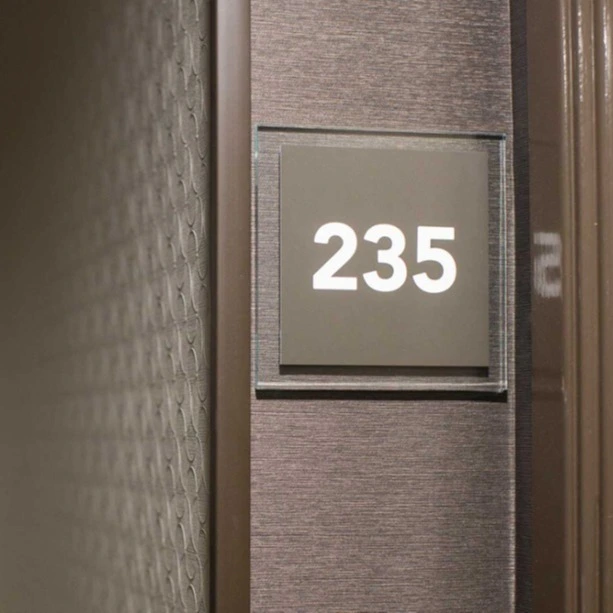Workplace panic buttons help employees feel safe on the job. This is especially critical for “lone workers” like nurses and housekeepers who regularly encounter strangers due to the nature of their job. Not surprisingly, hotel workers and hospital staff are the two groups that most often request panic button systems. Some offices are also using panic buttons to help their staff feel safe and secure in their work environment.
For managers of hotels or hospitals, it is important to understand the different types of technology used in wearable panic buttons in order to make the best choice about how to protect your workers and make them feel at ease.
The technology used poses two main questions:
- How is the location of the requester pinpointed?
- How is the panic information relayed?
We’ll explore each in turn.
1. How Is Location Determined on Portable Panic Buttons?
In order for panic buttons for hotels or healthcare to serve their intended function, the location of the person in distress must be determined. Here are different ways that this can be done:
Location Isn’t Determined: Some very simple panic buttons don’t actually identify the employee’s location before sending the panic “event.” This is acceptable for some use cases, such as if you have a limited number of staff who only work in very specific areas. In those instances, responders could perhaps easily figure out where to look when the panic event is reported.
Alarm-Based Systems: Another popular type of panic button is simply a very loud alarm device. The hope is that other staff members or guests/patients will hear this shrill alarm and alert responders. Finding the source of the alarm is then simply a matter of tracking the noise. Many wearable panic buttons that use other types of location technology also employ audible alarms because the noise alone can deter the person who is causing the distress.
Bluetooth Beacons: Bluetooth Beacons are inexpensive radio transmitters that can be placed in rooms and common areas of hotels or hospitals. These beacons send out a radio pulse a few times per second that encodes a unique identifier. When a unique beacon is placed in each room, the panic button can detect the closest beacon and include that information in its location report.
Unfortunately, systems that rely solely on Bluetooth beacons have a tendency to “floor hop” or “room bounce,” rendering their precision questionable. This is because the radio signal from the Bluetooth beacon can fade in certain parts of rooms, while the signal from the beacon in the adjacent room can be stronger in certain areas.
Be sure that you can tolerate an occasional mistake in identifying the reporter’s location if you rely on Bluetooth panic buttons. Our AirFinder Associate Alert Tag system uses a combination of Bluetooth and Ultrasound to ensure that the user’s location is accurately reported in an emergency.
Wi-Fi Signals: Many hotels, hospitals, and offices have a dense network of Wi-Fi access points, each of which is transmitting a unique base station identifier address. When a survey is conducted in a facility, this Wi-Fi signal pattern can be used to determine the location. However, this requires a relatively dense Wi-Fi infrastructure as well as knowledgeable technicians to conduct the survey.
Sites with poor Wi-Fi coverage will have a larger area of uncertainty for pinpointing a reported location. Wi-Fi panic buttons can also suffer the same “room bounce” or “floor hopping” issues that Bluetooth systems face. As a side note, Wi-Fi detection is often used by smartphone systems as a way of determining location because GPS signals do not work well indoors which we’ll discuss shortly.
Ultrasound: Ultrasound is a very high-pitched sound that humans cannot hear. It also doesn’t penetrate walls very well, allowing for excellent in-room accuracy for reported incidents. For these reasons, our AirFinder Associate Alert System uses ultrasound as a secondary method of detecting the location of a panic button.
When combined with Bluetooth, ultrasound panic buttons provide near-certain location detection for workers who need immediate help. So that means no “floor hopping” or “room jumping.”
GPS: GPS is a satellite-based system that phones and cars often use to locate and orient themselves in the world. However, because the signals from GPS satellites do not penetrate walls, GPS panic buttons are not often used indoors. GPS is sometimes used for outdoor “lone work safety” systems, where an employee—like a cell tower technician—might be working alone for long periods of time.
Finding the right location technology for a panic button solution is difficult because each of the above technologies has a different level of cost, performance, and installation complexity. For applications where near-perfect location information is important, a Bluetooth + Ultrasound real-time location system like AirFinder might be required. If a lower cost and simpler solution will suffice, perhaps a different technology would work well for your application.
2. How Do Wearable Panic Buttons Send Duress Information?
Once a panic event (sometimes called a “duress event”) occurs, this information is often sent wirelessly to a software system that can alert responders. This is especially important in large facilities or where many workers are present.
The System Doesn’t Send the Event: Some simple systems don’t wirelessly report the panic event. Generally, this would be limited to an audible alarm system, as discussed earlier.
Wi-Fi: In Wi-Fi panic buttons, the alert tag connects to the building Wi-Fi and shares the panic event (and location, if known) using the IP network. This requires that all the panic buttons be registered to use the Wi-Fi network, and if the IT department makes changes, the panic buttons must be updated accordingly.
Some panic buttons connect to a gateway device using Bluetooth and then these gateways connect via Wi-Fi. This can drive down the cost of the panic tags, but the Wi-Fi gateway devices must be installed and guarantee coverage throughout a facility. Because Wi-Fi networks can be unpredictable, some administrators have reported frustrations with the stability or complexity of systems that rely on Wi-Fi.
Mobile Phones: Most workers are carrying around an internet connection in their pocket. There are two main types of mobile panic buttons: 1) apps that function as the whole system, and 2) separate buttons that connect to the phone to relay the information.
Obviously, the worker must have the phone nearby for these to function and potentially be willing to use their personal phone, which is not possible for some people. Panic button apps are perhaps not ideal because of the time it takes to unlock a phone, open an app, and press a button during an emergency.
Cellular: Some portable panic buttons have a cellular modem inside that connects directly to the cellular network. This is a great solution for panic buttons since cellular coverage is usually decent in hotels and hospitals. However, these panic buttons can be rather costly and large, to accommodate the battery and electronics necessary for a cellular modem. This also requires a separate data plan for each cellular panic button.
Mesh Networks: Like the Wi-Fi gateway devices mentioned above, gateway devices can also be connected via a mesh network, where each gateway relays data to its neighbors and finally to the internet. These systems require a mesh “node” to be installed in about half of the rooms of a facility to be able to form a sufficient mesh.
LPWAN: For a low-power, wide-area network technology like Symphony Link to be used, access point devices need to be installed in some rooms to which the button can then connect using a technology like Bluetooth. The access point can then relay this information back to a central gateway device (as opposed to many gateways required by systems that are purely Wi-Fi), which can itself be connected to the system via cellular.
Conclusion
The type of wireless system used to relay data for workplace panic buttons drives the cost and complexity of the system. Be sure you understand the reliability, costs, and complexities introduced by the “backhaul” or connection technology when choosing the right panic button system for your staff’s needs.Have questions?




